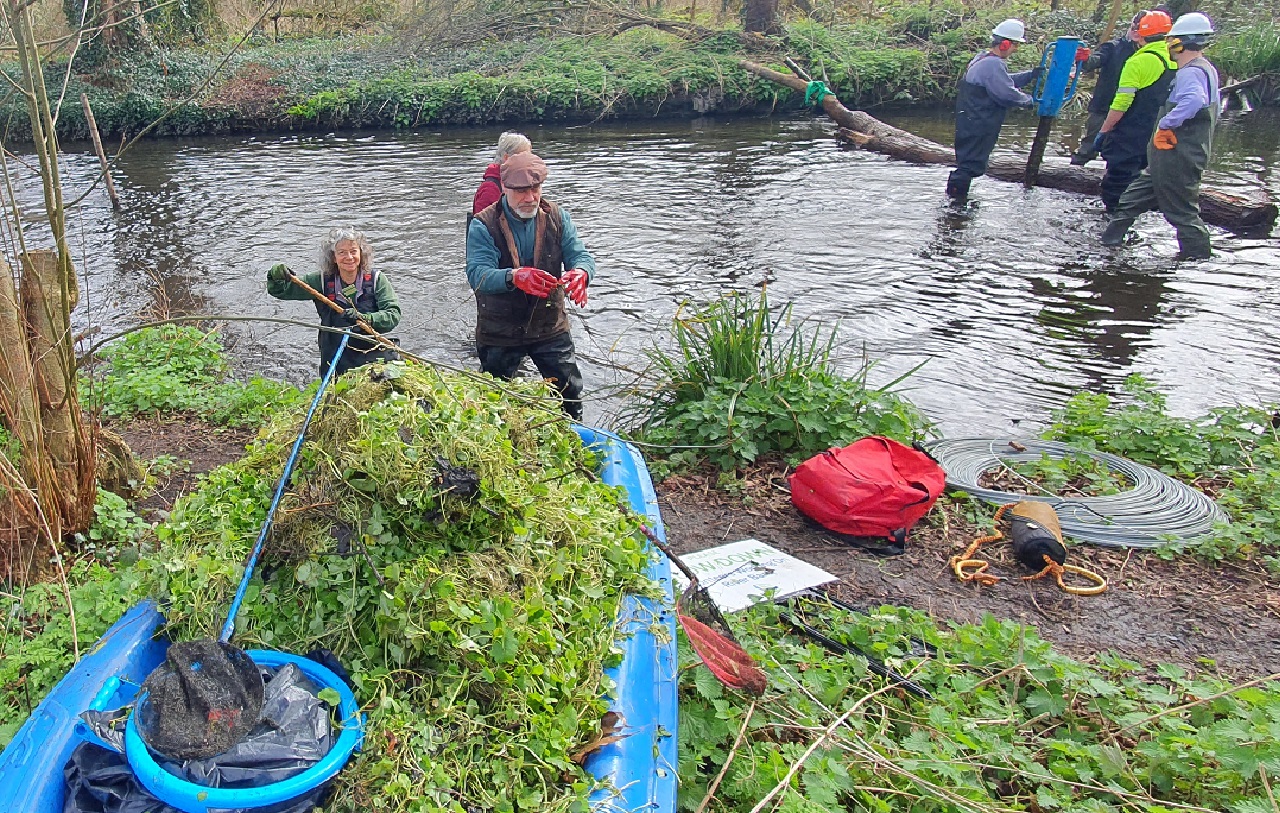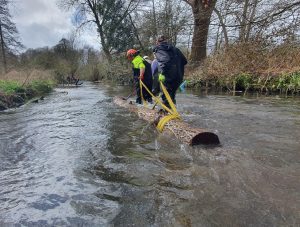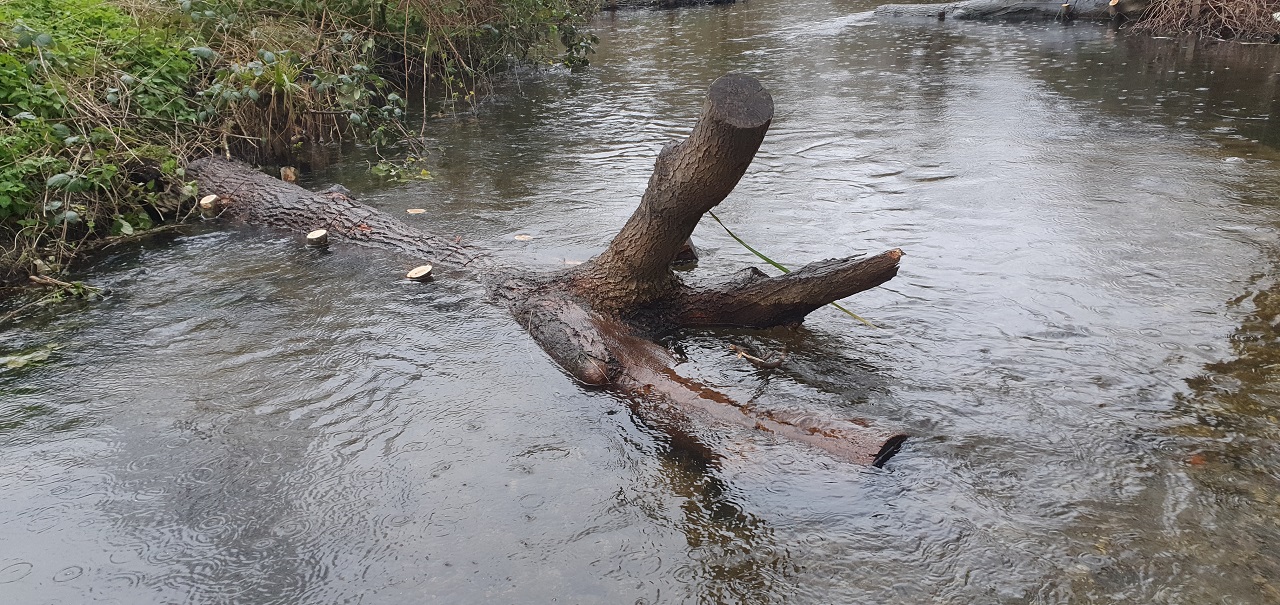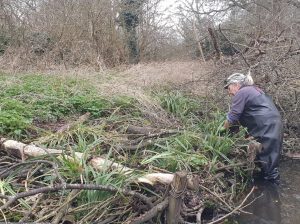Working in river restoration, there’s nothing more satisfying than being able to see the difference made when you return to a site – and then embark on further improvements.
That feeling is heightened all the more when you return with volunteers and witness their delight, as they too see improvements, especially when their previous activities included put odd-looking obstacles in the river which, to the untrained eye, could look out of place.
So it was on the River Wandle earlier this year. We led two days of work as part of our ongoing Morden Hall Park restoration project, on a section of the river that is fairly hidden from view when the public visit this National Trust property.
Removing pennywort

Since 2015, we have been taking volunteers out to this patch every spring and autumn, to carry our river improvement work. Activities have ranged from removing invasive vegetation and taking out toe boarding (which stops animals and fauna making their way from river to land and prevents natural river processes from occurring) and adding more natural looking riverbank materials such as berms – a ridge, made in this case of branches, sticking out from the bank into the river.
Back in the spring, working with the Morden Hall Nature Group, we started two days of work with a litter pick and general tidying. However, the main focus of the first day was to remove a significant amount of pennywort, an invasive species that regularly occurs at the site in large quantities.
We loaded up our small boat several times in our attempts to rid the river of this fast-growing plant, which smothers other important habitats and reduces biodiversity by crowding out native plants – taking oxygen from fish and insects.
Our hardy group of 20 volunteers then set about installing some sizeable deflectors – large tree trunks that protrude into the river – into the river channel.
These will help to improve the river. In this area, the Wandle has been widened and straightened, reducing the energy in the river. This means that silt and sediment settles to the riverbed and smothers natural gravels. Clean, loose gravels are a vital part of rivers, providing spawning habitat for fish as well as habitat for invertebrates and aquatic plants.
Deflector work was tough going

Deflectors help to remove sediment and silt from the riverbed by reshaping the water flow and increasing the diversity of the river’s flow. Instead of being straight, the water now meanders around these impediments as it would have done when the watercourse was formed naturally. This work varies the flow in the river, scouring gravels and creating pools behind the deflectors, giving respite to fish and allowing them to hide, spawn and thrive.
Through this work, funded by the Environment Agency, we were able to put in four sizeable deflectors made from ash trees which the National Trust had stockpiled for us when undertaking Ash Dieback work.
Knocking in these large tree trunks into place (a pair at a time) after dragging them up the river and moving them into position, was hard work! The posts to attach them were driven into the riverbed, to make the deflectors look as natural as possible.

Blooming the berms

Not as heavy work, but equally as important, was planting golden flag iris into one of the berms that we had installed on a previous visit. These berms are made of tree brash that has been pushed together and secured, to give fish and invertebrates another refuge in a varying flow river. The golden flag iris has beautiful yellow flowers in summer, which might still be in bloom by the time we return later in the year, as part of our continued work.
Having worked at this site repeatedly over time, it is amazing to see what a difference our work has made to the riverbed. In this once straight channel we have varied the flow by creating a meandering pathway. Instead of silt covering the whole riverbed, the deflectors and berms have helped to create clean areas of loose gravel; perfect for fish to spawn in and prosper – and now water crowfoot, is also thriving.
Typical of a globally rare chalk stream such as this, this aquatic plant thrives in fast flowing water, providing habitat to invertebrates and is a good source of food. It can also act a bit like the deflectors by redirecting water and increasing local speeds to create clean places in the gravel.
Biodiversity is certainly booming – and we couldn’t do it without our volunteers.
This summer, we made a short video of how our work since 2020 is having an impact on this section of river, changing it from a straight river into a habitat-rich one where a variety of wildlife can thrive in a river that has varied flow speeds.
